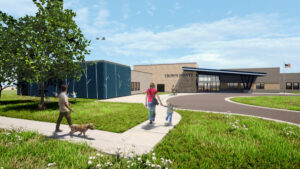Outdoor Spaces in Urban Architecture
 “Urbanization, the process by which large numbers of people become permanently concentrated in relatively small areas, forming cities.” (Brintanica.com)
“Urbanization, the process by which large numbers of people become permanently concentrated in relatively small areas, forming cities.” (Brintanica.com)
I grew up in a densely populated area of Germany, where few people own single family houses with large backyards. My first apartment, I shared with a roommate in college. It approximately 40 square meters (430 sf) and it had a balcony, facing the inner courtyard of a City block. This balcony was about 3’ by 3’ and we loved it. It was right off the kitchen, fit a bistro table, 2 chairs and a couple of potted plants. When we needed a break from studying, we went outside to the balcony to get some fresh air. When summer rolled around we would have dinner and drinks out there, taking advantage of the warm nights.
Urbanization In Denver
Over the last decade Denver has grown about 20% in population (Denver Post) causing and rise in urban for areas around Denver such as LoDo, the Highlands and Sloan’s Lake. More and more people are moving from the suburbs to the inner cities, to be closer to work, closer to shopping, restaurants, bars, and clubs. This movement has caused an increase in rent and in turn, more and more people live in smaller apartments. A lot of apartment buildings are designed to have common amenity spaces, such as outdoor decks, pools and fitness centers. Some have their own gardens where organic vegetables are grown by their neighbors. These common spaces give people the opportunity to spend time outside or connecting with their neighbors. Living in a climate with vastly changing temperatures throughout the year, we want these spaces to have as much versatility as possible.
Designing in Urban Areas
Glass Transitions
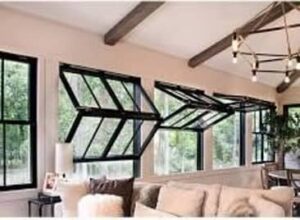
As architects we want to make these spaces flow. One way is by using elements that can slide to the side, open up like garage doors or or doors that fold toward one side to make the barriers between inside and outside almost disappear. This provides more natural light, makes the space feel larger. As an added bonus, people can continue their “Colorado Lifestyle” and enjoy the outdoors and sunshine within their urban neighborhood. Below are some more popular ways of doing so.
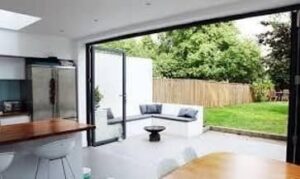
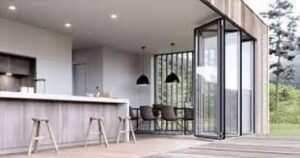
When designing these transitions, a couple of things are crucial. The transitioning details have to be thought through at a very early stage of a project to confirm that all finished floor elevations line up to comply with ADA requirements. If the outdoor space is above a living space, every connection has to be detailed very carefully. It’s important to consider overlapping membranes, sealants and surface materials such as pedestal pavers. To avoid some of these potential issues and the connected cost, balconies or decks can be stacked. This way balconies are above balconies and not above other living spaces avoiding any water penetration into the space below
Green Roofs
Due to the City of Denver’s, now implemented green roof initiative we will be building more green roofs which not only reduce the hot spots in the city but also can be used as outdoor recreational areas for building tenants. These can be seen in many location around downtown including, One Riverfront Townhomes and Condos and FlourMill Lofts. Some of the same detailing principles apply to green roofs as to balconies and roof decks.
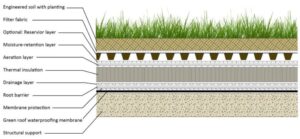
During this past year, we all spent more time at home and having a deck or balcony was very important. Going back to my small balcony in 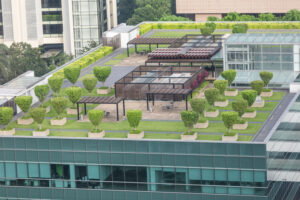 college, I believe it is worth spending the time and money on designing buildings with outdoor spaces (no matter how small), that connect to our homes. I can’t wait to put my patio furniture outside as the weather continues to get warmer.
college, I believe it is worth spending the time and money on designing buildings with outdoor spaces (no matter how small), that connect to our homes. I can’t wait to put my patio furniture outside as the weather continues to get warmer.
The design features discussed in the article can also be applied to a deck. Check out this article from one of our structural engineers about designing your deck. If you’re thinking about updating your outdoor living space but need some guidance give our architects a call and we can find the perfect solution for you.


